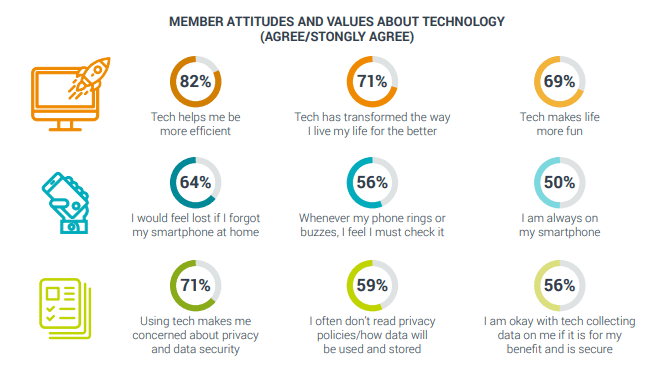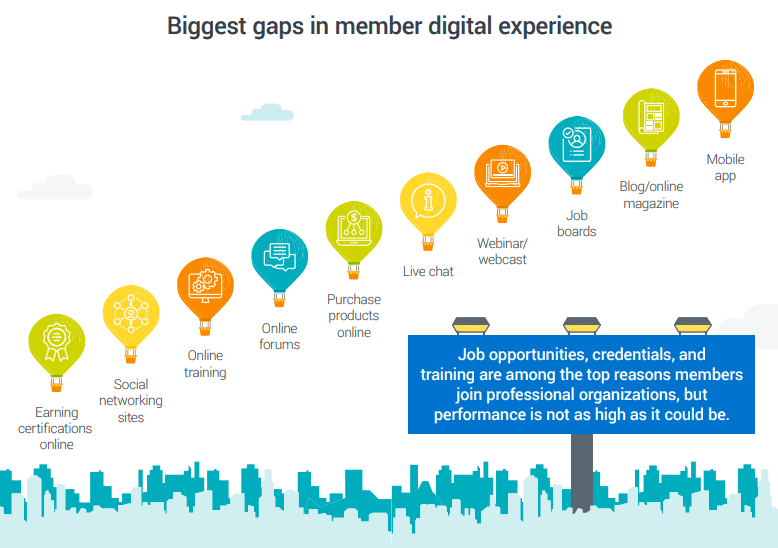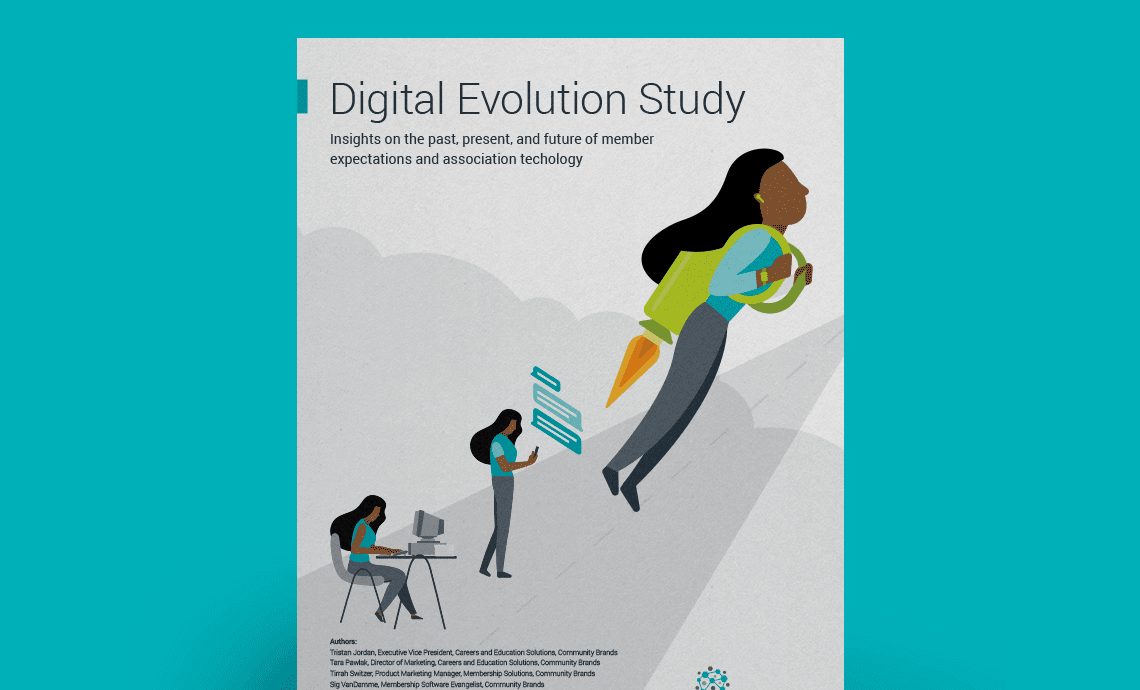As associations grow and evolve, their needs change. Meanwhile, technology advances for organizations aren’t standing still, either. They’re evolving, too, as are members’ expectations about the digital experiences they’re having with their professional membership organizations.
The accelerating pace of technology innovation poses a significant risk to professional membership organizations. If they don’t keep up, their member experience will suffer, and the success of their organization could be in jeopardy. A Gartner report underscores the growing issue of the pace of technological change. The report reveals top concerns for many senior executives across industries. The top two: pace of change and lagging digitalization.
With this environment in mind, Momentive Software conducted a study to answer four key questions about the evolution of technology in associations:
- What are the perceptions and behaviors of today’s members toward technology?
- How do members’ views and behaviors align with the digital experience professional membership organizations are providing today?
- How prepared are professional membership organizations to meet (and exceed) the experience their members expect – today and in the future?
- What can associations do now to ensure they deliver the digital experience members have come to expect?
Let’s take a look at key findings from the study so you can determine if your association is keeping up with members’ diverse technology needs.
Perceptions of associations’ overall use of technology is trending in the right direction.

Both members and association pros give their organizations decent ratings. However, there is still a big gap between member and pro perceptions of how well associations are using technology to connect with and provide services to members. Most members give their professional organization an overall grade of very good or excellent. Pros are harder on their organizations: With the exception of registering for events and emails, less than half of pros rate their organization as very good or excellent in any specific area. So, while overall use of technology is trending in the right direction, the gap between member and pro perceptions suggests a warning that organizations should step up their technology game before member perceptions start to go in the wrong direction.
TIP: Technology is at the center of engaging and understanding members through each stage of the member journey. Watch the webinar on Key Ingredients to a Complete Member Journey to learn how you best use your tech stack.
Data privacy and security need attention.
71% of members say they worry about data privacy and security, but it does not prevent most of them from sharing information if they feel it is secure and/or for their benefit. At the same time, few IT pros say they are prepared for a cyber-attack, nor is cyber security a top objective of management.
TIP: Need some guidance on walking the tightrope between personalization and data privacy? Get the infographic on Member Personalization and Data Privacy.
Personalization remains an important issue.
Personalization of content continues to be an opportunity for organizations. Most members are interested in it, but few organizations seem to offer it in any relevant way. Survey responses suggest that promoting this benefit as “targeted, valuable content” might be one way to diminish any privacy concerns that members may have.

Organizations have some work to do around value propositions and technology.
There are a few areas members cite as reasons they joined associations where their perceptions of the organizations’ technology use are positive: news/regulations/trends, raising awareness, networking, and advocacy. But there are also key areas that get lower scores: online trainings, certifications, and job boards.
TIP: Download our infographic to learn more Member Value and the Technology Gap.
Interest in data analytics grows, but know-how lags.
One area that remains a second-tier concern but is emerging as more important is the ability to gather business intelligence through data analytics. However, few pros are confident in their member data, with data integration being a big issue. Only a small number say they can easily join data from various sources to paint a clear picture of their members. If they could, pros have a list of ways they would use the information to better target member communications.
Your career center provides you with valuable information that can help you make more informed decisions and deliver the results your small association needs to grow. But you must have a way to collect, store, and use this data across your organization to make the most of it. Pairing your career center with a modern association management system (AMS) can help you:
- Attract prospective members. When non-members create an account in your career center, you can collect engagement data based on various touch points through your career center, and then upload the information back to your AMS. You can use this information to drive membership by triggering automated marketing campaigns that share the benefits of becoming a member, such as career fairs and résumé critiques.
- Engage and retain members. The data gathered from your job board and your AMS gives you detailed information that is helpful when creating targeted marketing campaigns that keep members engaged with your career center. For instance, not all members using your career center are actively searching for a job, but they might be looking to advance in their career. For those members, you can promote courses and certifications or résumé critiquing services that will prompt them to begin searching for career advancement opportunities.
- Drive more revenue. Your job board learns a lot about your members and job seekers. It collects information such as who is actively job searching and what types of jobs they’re seeking. This data can be passed to your AMS for you to analyze for potential revenue opportunities. For example, if most of your users are actively searching for jobs, you can set up a virtual career fair to help connect them with employers while earning revenue from registrations (both attendee and employer).
TIP: Watch the webinar on Analytics for Everyone: How to Become a Data-Driven Organization.
Technology and member loyalty continue to go hand in hand.
Perhaps as no surprise, there remains a strong correlation between technology and loyalty. This year’s study confirms, once again, the most committed members place more importance on technology in their lives and feel their organization delivers a better technology experience. This suggests that a lack of emphasis on technology in some organizations could leave many of their members questioning the value of membership, which in turn, could impact retention and the long-term outlook for their organizations’ success.
TIP: Download the Member Engagement and Loyalty Study to dig deeper into what’s behind member sentiments and behaviors based on career stage and other factors.
Technology clearly plays a crucial role in the lives of today’s members. And, between the consistently strong technology/member loyalty correlation and the ever-changing world of technology, you can’t afford not to pay close attention to what your members expect. YM Careers can help your association measure up to today’s technological world and use innovative ways to engage with members, ensuring they renew year after year. Request a personalized demo today to find out how!




